United States of America - Oral Health Programme for Navajo Indians in Pine Hill, New Mexico
United States of America - Oral Health Programme for Navajo Indians in Pine Hill, New Mexico
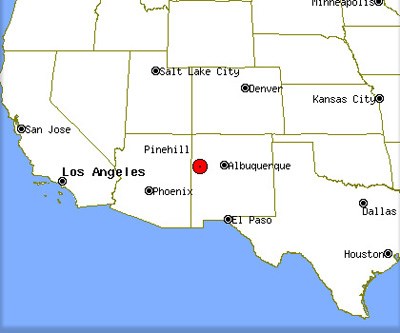
more info on this website
Introduction
The Pine Hill Health Centre in New Mexico, USA is run by the Ramah Navajo School Board. The Health Centre, under the Indian Self determination Act (Public Law 93-638) contracts with the Indian Health Service (IHS) to provide health care to the 3,500 Navajo Indians of the Ramah Navajo Reservation.
This is a presentation based on a publication by Frank Carberry on the oral health programme initiated and implemented during 2002-04.
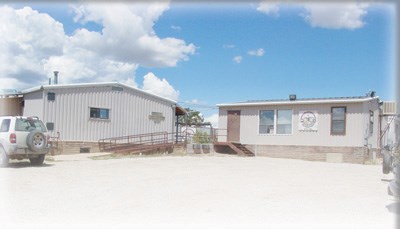
Background and Rationale
In early 2002 faced with large numbers of children with dental emergencies, Chief Dental Officer, Dr William Cloud and Clinic Administrator, Ms Carolyn Finster of the Pine Hill Health Centre, embarked on a community based approach towards addressing the dental needs of their patients - to initiate a dental disease control programme that would reach all the children in the reservation.
Dr. F. Carberry, who was appointed as a dentist, together with IHS Certified Dental Assistant, Marian Gonnie, a current employee of the clinic, carried out this project. Some of the funds required to start the programme were provided by the Con Alma Health Foundation of Santa Fe, New Mexico.
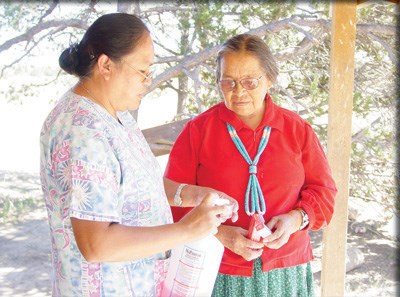
Preparing bottles of fluoride rinse for mother to use at home during summer.
Project Outline
A baseline dental survey of the children participating in the Head Start Programme (Head Start is a program of the United States Department of Health and Human Services that focuses on assisting children from low-income families. Created in 1965, Head Start is the longest-running program for stopping the cycle of poverty in the United States. It provides comprehensive education, health, nutrition, and parent involvement services to low-income children and their families. Wikipedia (accessed July 2007).) in the elementary school on the Reservation was used to plan the initial efforts. Follow up surveys were used to monitor the results and adjust the program. Given the excessive quantity of disease present and the limited treatment resources, traditional restorative care was not an option and not included in this effort.
Fluoride rinses, fluoride varnish and fluoride foams, all used in dosages designed to result in remineralization, were the principle treatment modalities received by the children. Once initial control of the disease was established in each group of children, Atraumatic Restorative Treatment (ART) using fluoride releasing cements and sealants were added to the programme.
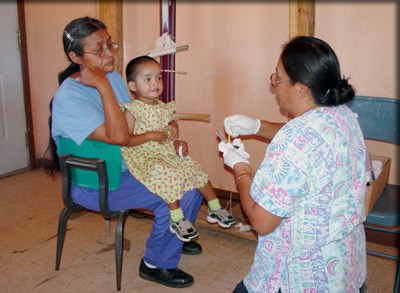
Instructing mother in use of fluoride producing at home.
Phase One - Evaluation and dental staff training
During October 2002, a baseline survey was conducted of 180 children aged 3-13 years. The children were examined using the WHO methodology, but modified for this project. Follow-up surveys used the same methodology.
Based on the baseline study, it was decided to use a 0.2% sodium fluoride rinse, twice per week for five minutes or as close to that time the child could tolerate the rinse without swallowing. Previous work by the Ministry of Health of Antigua/Barbuda and confirmed by similar efforts on the Fort Berthold Reservation in North Dakota, had shown that dosage to be highly effective in attaining remineralization, yet manageable, when administered in an educational setting.
The dental staff of the Health Centre was trained in the use of fluoride varnish and foam to augment the school rinse program for patients of all ages. The varnish dosage used was 3 applications within a 2 week period, as demonstrated to be effective by the IHS, particularly in Claremore, Oklahoma.
Atraumatic Restorative Treatment (ART) of previously remineralized teeth requires no excavation of any kind. Care needs to be taken to avoid sealing non-vital pulp chambers. The clinic staff was further trained in the use and administration of these procedures.
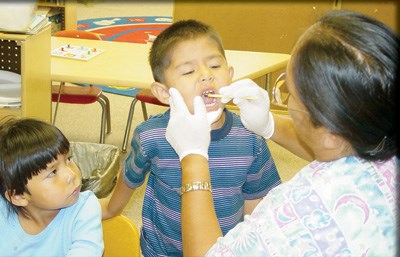
Applying fluoride varnish.
Phase Two - Involving the community
The School Board, the community Administrative entity which had the ultimate responsibility to provide health care, was enlisted to provide the administrative leadership to assure community involvement in this new approach to dental care.
The school teachers in the primary schools and Head Start Programmes were trained as fluoride rinse administers at school.
The dental staff made presentations on the activities of the project to any community group that was interested, beginning with the entire staff of the Health Centre. This approach to community awareness resulted in nearly 100% participation of the children.

Checking progress of young patient at Health Center.
Phase Three - Re-evaluation and adjusting the program
During April 2003, 251 children (ages 3 to 13) were examined to evaluate the progress to date. There was a marked decrease in active decay. Remineralized teeth were easily demonstrated.
Based upon the experience at Fort Berthold, plans were made to encourage fluoride rinsing at home during summer months. When problems were encountered in getting the caregivers to visit the school to pickup and learn to administer the rinse, the school bus drivers were recruited to do the job during their normal bus runs. All of the Health Centre's employees, particularly the Home Care Nurses and Aides, were encouraged to carry and dispense fluoride rinse wherever they found a need.
The exams also revealed an Early Childhood Caries problem in the children less than 3 years and before they started school. Those children were targeted by requesting the medical providers to examine and refer them to the dental clinic for varnish treatment by the Dental Assistant.
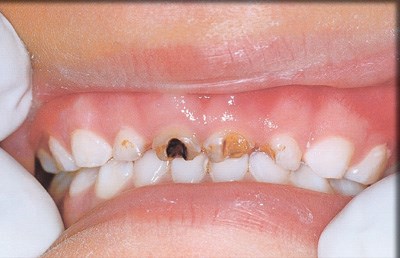
Remineralized upper and lower anterior teeth in 5-year-old.
No further restoration or treatment anticipated.
Phase Four - Further re-evaluation
During October 2003 and one year into the project, 241 children (ages 3 to 13) were examined.
The numbers of children with active decay continued to decrease with 80% of the children returning to school free of active dental disease and pediatric emergency visits were marked reduced.
Unfortunately though, the exams also revealed a continued Early Childhood Caries program. The clinic procedures were adjusted to make the Dental Assistant available to provide the first varnish treatment at the time of discovery and in the medical exam room itself.
Outcome
18 months after inception of the project
Baseline study conducted in October 2002 showed that 46% of the 3-year-olds and 78% of the 4-year-olds had active caries. About 6% of the 3-year old group had the significant decay found in Early Childhood Caries.
When 201 children (age 3 to 13) were examined in April 2004, percentage of children exhibiting active decay had decreased from 63% to 24.4%.
The number of prematurely extracted primary teeth in 5-year old children had decreased from .89 teeth per child (in Oct. 2002) to .18 teeth (in April 2004).
During the 18 months of the project the per month sealant application rate in the clinic had more than tripled, with a 93% retention rate.
The DMFS score for 11-year-olds had dropped 1.1 (in Oct. 2002) to .26 (in April 2004).
Improvements to the Programme
Even the final examinations for this programme continued to identify areas where the dental disease control programme needed adjustment.
Revisions were made to provide for the needs of the children with special needs, who were often absent form the classroom during the rinse time, and of the children who were home schooled.
The April 2004 examinations also identified 2 classrooms where there had been a change of staff. The new staff had not been made aware of the importance of the fluoride rinse.
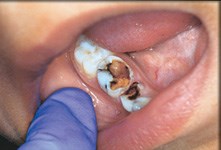
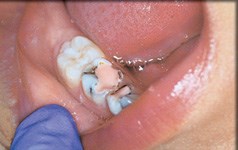
Severely diseased posterior primary teeth remineralized by 3-4 weeks of treatment
with fluoride rinse a dosage of 2 times per week for 5 minutes per rinse.
Same teeth but now stabilized by ART application. No anesthesia required.
Conclusion
The cost of dental care is becoming an issue in the United States and in many other places in the world. There are many who can not afford the conventional restorative care or who live in locations, where it is not available. The experience in Pine Hill has demonstrated an alternative method for obtaining improvement in oral health. It costs 10 cents (US) to provide a one year supply of fluoride rinse/child.
Community involvement and fluoride rinse could be an efficient approach in successfully improving oral health.
References
Carberry FJ, Cloud B, Finster C. Dental disease control in Pine Hill, New Mexico. NY State Dent J. Feb. 2004;70-2:30-33. Abstract PubMed
Carberry FJ, Fluoride Rinse, An Alternative to Restoration in Barbuda West Indies; NY State Dent J. Feb. 1999:65-2: 34-38
Bruerd B, Early Childhood Cavities Project, Final Report; Dept. of Health and Human Services administration for Children and Families; Sept. 2001
